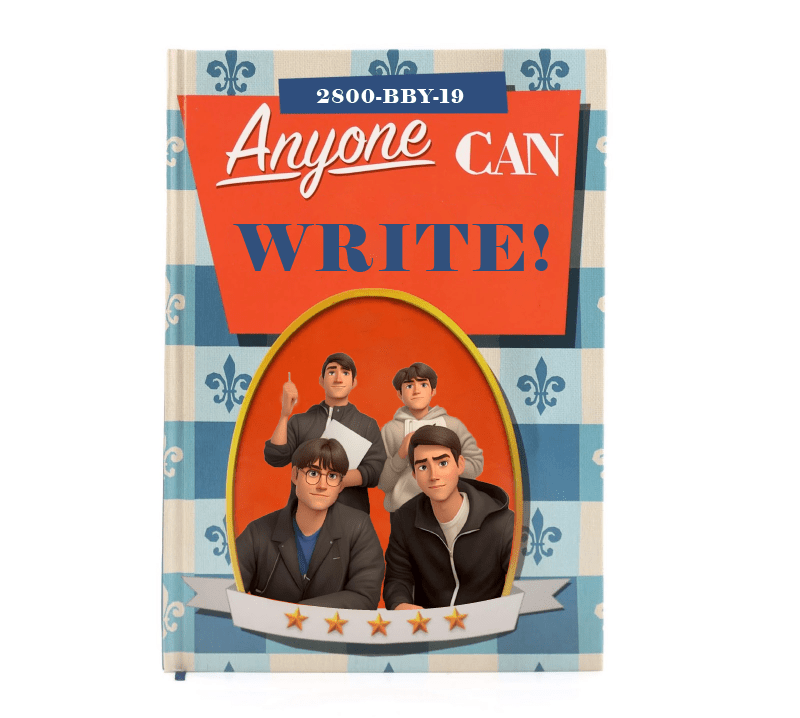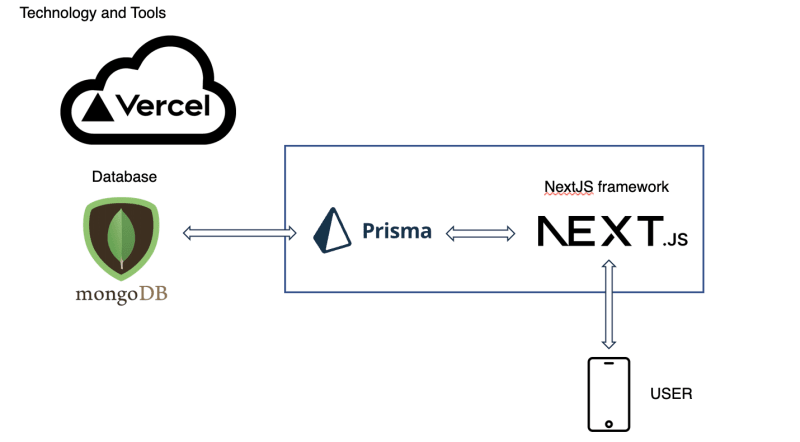Starters 🏁
Welcome back to another series of the "Project" series, where I delve into the technical components of the projects I've undertaken. This week, I'll discuss a course project I completed for COMP 2800 at BCIT. If you're unfamiliar with me, please refer to my introductory post.
COMP 2800 🤖
COMP 2800 is a five-week-long project course for all first and second-term Computer Systems Technology (CST) students at the British Columbia Institute of Technology (BCIT). This year, the project theme was Impactful Intelligence - AI Powered Web Solutions, challenging students to harness artificial intelligence for benevolent purposes or assistance. You can read the full project details here.
Agile scrum methodology 🔄
For this project, we adopted the agile scrum methodology, a blend of agile philosophy and the scrum framework. "Agile" denotes an incremental approach, allowing teams to develop projects in small increments. Scrum, a specific type of agile methodology, is renowned for segmenting projects into sizable chunks known as "sprints." In essence, we employed the agile methodology through weekly sprints and daily scrum meetings.
To learn more about the agile methodology, please refer here 👇
Project overview 🙆
Our team, comprising four members (including myself), chose to develop a community platform connecting writers and readers. This platform facilitates the crafting of unique stories with the assistance of the OpenAI API. We opted to use the modern technology framework, Next.js. Below, I've outlined our entire tech stack for the project.
- Language: JavaScript
- Frameworks: Next.js, Node.js, Prisma ORM
- Database: MongoDB
- Hosting: Vercel

Code review 🔍
Backend
- Prisma ORM
Initially, we selected Prisma as the ORM for our MongoDB database.
What is an ORM? ORM (Object-relational mapping) serves as a "bridge" between object-oriented programs and relational databases, streamlining CRUD operations. For instance, an SQL query fetching specific user information might look like:
"SELECT id, name, email, country, phone_number FROM users WHERE id = 20"
However, using ORM, we can simplify that process, for example:
users.GetById(20)

Prisma's journey begins with its schema, where we define database models and their relationships using the Prisma schema language. One can either craft the Prisma schema from scratch or link it to an existing database. Below is an example of a user model crafted with the Prisma schema.
model User {
id String @id @default(auto()) @map("_id") @db.ObjectId
name String?
penName String @default("")
email String? @unique
emailVerified DateTime?
image String?
voteBranchThreads String[] @default([])
likeThreads Json @default("{}")
accounts Account[]
sessions Session[]
mainThread MainThread[]
branchThread BranchThread[]
}
Based on the established Prisma schema, we can commence our database queries using the ORM. I'll delve deeper into this in the API routes section.
- API routes (Prisma client utility functions)
In this project, I was tasked with backend responsibilities. This involved crafting database queries in form of utility function using the Prisma ORM and developing API route handlers for various HTTP methods. I specifically focused on the branch queries and route handlers. Below, I'll present examples of (1) returning main threads and (2) returning main threads by user id.
(1) Returning main threads
/**
* getMainThreads
*
* @returns {Promise<{threads: any}>}
*/
export async function getMainThreads() {
try {
const threads = await prisma.mainThread.findMany({
include: {
branchThread: true,
},
});
return { threads };
} catch (error) {
return { error };
} finally {
}
}
(2) Returning main threads by userId
/**
* getMainThreadsById
*
* @param {ObjectId} id
* @returns {Promise<{mainThreads}>}
*/
export async function getMainThreadsById(userId) {
try {
const mainThreads = await prisma.mainThread.findMany({
where: { userId },
});
return { mainThreads };
} catch (error) {
return { error };
}
}
As evident, the components of these two codes encompass the function signature (name, parameters, return type), functionality (e.g., findMany, include, where), and error handling. For (1) Returning main threads, it's clear that it doesn't require parameters, unlike (2) Returning main threads by userId, which necessitates the userId parameter. Additionally, the database query employs findMany, distinguishing between the 'include' option (which fetches related data) and the 'where' option (filtering based on the provided parameter).
From the utility functions created, such as createMainThread, I had to create handlers for the API route. In our repository, we organized the api routes in pages/api folder. Below, I will provide an example of an api route handler using createMainThread utility function. To begin, we have to import the necessary utility function.
import {
createMainThread,
getRandomMainThreads,
getSearchMainThreads,
} from "@/lib/prisma/mainThreads";
Then we have to declare the request and respond of our api route which involves the HTTP method. For example:
const handler = async (req, res) => {
if (req.method === "GET") {
try {
const searchParam = req.query.search;
const genreParam = req.query.genre;
const tagParam = req.query.tag;
const getMainThread =
searchParam || genreParam || tagParam
? getSearchMainThreads(searchParam, genreParam, tagParam)
: getRandomMainThreads();
const { randomMainThreads, error } = await getMainThread;
if (error) throw new Error(error);
return res.status(200).json({ randomMainThreads });
} catch (error) {
return res.status(500).json({ error: error.message });
}
}
}
In this code, if the request method is GET, the queries for search, genre, and tag are executed.
const {randomMainThreads, error} = await getMainThread;
This line awaits the result of the getMainThread function, which is expected to return a Promise. It then destructures the result to extract the randomMainThreads and error properties. If any errors are present, an error message will be returned. If there are no errors, the function sends a response with a status code of 200 (OK) and a JSON body containing the randomMainThreads data.
Frontend
As I was mainly tasked with backend, I did not contribute much to the design in the frontend. However, there was a few that I worked on, such as the easter eggs, and the main thread renders, and OpenAI API calls.
In the render react hooks, the key points are the useState, useEffect, and useCallback hooks.
- useState - useState is a hook that lets you add state management to functional components in React.
const [mainThread, setMainThread] = useState({}));
- useEffect - useEffect is a hook that lets you perform side effects in functional components. It can be thought of as componentDidMount, componentDidUpdate, and componentWillUnmount combined from class components.
useEffect(() => {
if (mainThread.phase === 6) {
handleAIGenreGenerate();
}
}, [mainThread.phase]);
- useCallback - useCallback is a hook that returns a memoized version of the callback function that only changes if one of the dependencies has changed. It's useful when passing callbacks to optimized child components that rely on reference equality to prevent unnecessary renders.
const handleAIGenreGenerate = useCallback(async () => {
const contentBody = mainThread.contentBody;
const endpoint = "https://api.openai.com/v1/completions";
const options = {
method: "POST",
headers: {
"Content-Type": "application/json",
Authorization: `Bearer ${process.env.NEXT_PUBLIC_OPENAI_API_KEY}`,
},
body: JSON.stringify({
model: "ada:ft-personal-2023-05-02-07-34-38",
prompt: `${contentBody} \n\n###\n\n`,
temperature: 0.5,
max_tokens: 2000,
}),
};
const handleAIGenreGenerate = useCallback(async () => {
const contentBody = mainThread.contentBody;
const endpoint = "https://api.openai.com/v1/completions";
const options = {
method: "POST",
headers: {
"Content-Type": "application/json",
Authorization: `Bearer ${process.env.NEXT_PUBLIC_OPENAI_API_KEY}`,
},
body: JSON.stringify({
model: "ada:ft-personal-2023-05-02-07-34-38",
prompt: `${contentBody} \n\n###\n\n`,
temperature: 0.5,
max_tokens: 2000,
}),
};
const response = await fetch(endpoint, options);
const { choices, error } = await response.json();
Breakdown of the code above:
Endpoint: The function targets the https://api.openai.com/v1/completions URL, which is OpenAI's endpoint for generating completions based on a given prompt.
Headers & Body: The request method is POST. The headers specify the content type as application/json and include an authorization token from the environment variables. The body of the request contains a JSON string with several parameters.
Fetching Data: The function uses the fetch API to make the request to the endpoint with the specified options. Once the response is received, it is converted to JSON format.
Response Handling: The function extracts choices and error from the JSON response. The choices typically contain the generated text from OpenAI, while error would contain any error messages if the request failed.
Finetuning
Kaggle dataset
One of the requirements for the project was to make use of a dataset. Since our application was based on story building, we decide to use book genre dataset to implement genre prediction.
OpenAI GPT
For finetuning based on the dataset, I followed the documentations.
The steps in fine-tuning involve:
Installation of openai using pip install
Obtaining API key
Prepare training data in JSONL format and in "prompt", "completion" format
CLI data prepartion and upload
Fine-tuning.
For more information on finetuning, you can check out my research repository.
Conclusion ⛳️
Thank you for taking the time to read and I would appreciate any suggestions to improve the quality of my blog. Stay tuned for future posts. 🤠
Check out the project embedded repository below! 👇
A community platform that connects writers and readers, enabling the creation of unique stories with the help of the OpenAI API. 🤖


















